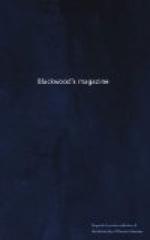a bride, in a long white robe, which seemed not as
if woven from the fleece of the sheep, but from
the web of the spider, or of those winged insects,
the long threads spun by which are gathered by
the Indian women from the trees of their own country.
The monster was just rising out of the sea opposite
to the damsel, his head alone being distinctly visible,
while the unwieldy length of his body was still in
a great measure concealed by the waves, yet so
as partially to discover his formidable array
of spines and scales, his swollen neck, and his
long flexible tail, while the gape of his horrible
jaws extended to his shoulder, and disclosed the abyss
of his stomach. But between the monster and the
damsel, Perseus was depicted descending to the
encounter from the upper regions of the air—his
body bare, except a mantle floating round his
shoulders, and winged sandals on his feet—a
cap resembling the helmet of Pluto was on his head,
and in his left hand he held before him, like a
buckler, the head of the Gorgon, which even in
the pictured representation was terrible to look
at, shaking its snaky hair, which seemed to erect
itself and menace the beholder. His right hand
grasped a weapon, in shape partaking of both a
sickle and a sword; for it had a single hilt,
and to the middle of the blade resembled a sword;
but there it separated into two parts, one continuing
straight and pointed, like a sword, while the
other was curved backwards, so that with a single
stroke, it might both inflict a wound, and fix
itself in the part struck. Such was the picture
of Andromeda; the design of the other was thus:—
“Prometheus was represented bound down to a rock, with fetters of iron, while Hercules, armed with a bow and arrow, was seen approaching. The vulture, supporting himself by fixing his talons in the thigh of Prometheus, was tearing open the stomach of his victim, and apparently searching with his beak for the liver, which it was his destiny daily to devour, and which the painter had shown through the aperture of the wound. The whole frame of the sufferer was convulsed, and his limbs contracted with torture, so that, by raising his thigh, he involuntarily presented his side to the bird—while the other limb was visibly quivering in its whole length, with agony—his teeth were clenched, his lips parted, and his brows wrinkled. Hercules had already fitted the arrow to the bow, and aimed it against his tormentor: his left arm was thrown forward grasping the stock, while the elbow of the right was bent in the attitude of drawing the arrow to his breast; while Prometheus, full of mingled hope and fear, was endeavouring to fix his undivided gaze on his deliverer, though his eyes, in spite of himself, were partially diverted by the anguish of his wound.”
The work of Achilles Tatius, with all its blemishes and defects, appears to have been highly popular among the Greeks of the lower empire. An epigram is still extant, attributed to the Emperor Leo, the philosopher,[8]




